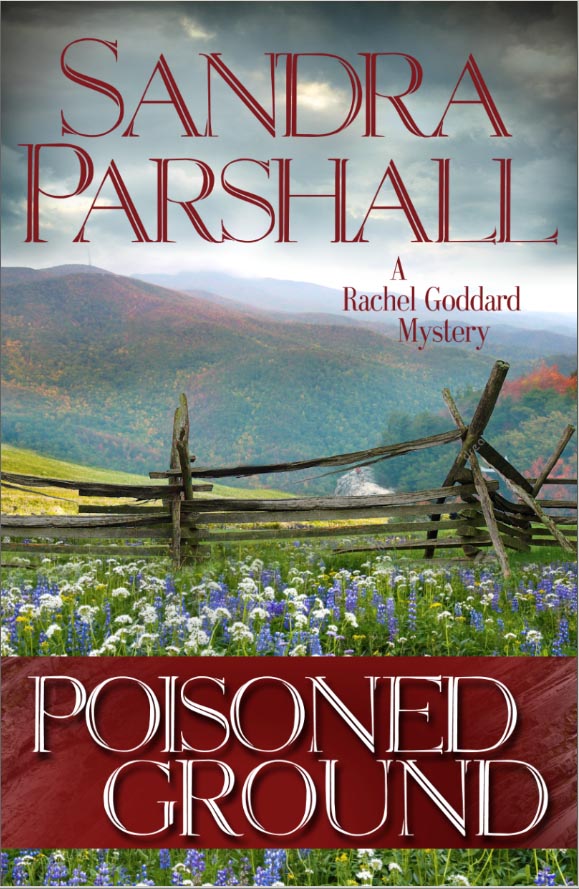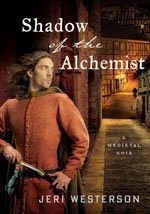by Sandra Parshall

As a physician, Larry Karp worked in the field of reproductive genetics and specialized in complicated pregnancy care, founding the Prenatal Diagnosis Center at the University of Washington, and Swedish Medical Center's Department of Perinatal Medicine. During that time, he authored three nonfiction books and wrote newspaper and magazine articles, as well as a monthly column of commentary for the American Journal of Medical Genetics. In 1995, Larry left medicine to write mystery novels full-time. He has published three Music Box Mysteries, a standalone, and three Ragtime Mysteries.
For his new novel, A Perilous Conception, Larry returns to an area of medicine he knows well to craft a suspense novel set in the days when a storm of controversy raged over “test tube babies” and the doctors who performed in vitro fertilization. The book was published this week by Poisoned Pen Press. Recently Larry talked to us about it and about the various turns his professional life has taken.
Q. Tell us a bit about A Perilous Conception.
A. It's 1976. Despite fierce international controversy over whether in vitro fertilization should ever be performed in humans, doctors around the world race to be first to produce a baby by this procedure.
Dr. Colin Sanford, a brilliant, ambitious obstetrician in Emerald, Washington has a plan. He recruits Dr. Giselle Hearn, an experienced laboratory geneticist-embryologist at the University who's frustrated by the ultra-conservative policies of her department chairman. Drs. Sanford and Hearn, working secretly, set out to put their names in history books.
Unfortunately, a secret that big is hard to keep. Dr. Hearn's lab supervisor catches on and demands a blackmail payment. Several months later, one of Dr. Sanford's patients gives birth to a healthy boy, and Sanford prepares to make an announcement at a press conference. But before that can come about, the baby's father kills Dr. Hearn and then himself.
Police Detective Bernie Baumgartner's investigation is hampered by pressure from influential people at the University who want to control sensationalism that might harm the institution. But dogged, tenacious Baumgartner suspects that Sanford and Hearn were in fact doing IVF, that they succeeded with the Kennetts, and that murder, suicide, and other crimes were the fallout. A double cat-and-mouse game develops between doctor and detective, and as stakes escalate, truth becomes an increasingly-evasive commodity.
Q. Is this a stand-alone or the start of a new series?

A. Right now, I'd say a standalone, which is the way I've imagined the book all along. Barbara Peters, my editor at Poisoned Pen, felt the story was Dr. Sanford's, and encouraged me to focus on him, keeping Baumgartner in the role of a sideman. Still, some early readers have commented that the detective is an interesting character, and they hope to see more of him. I can't quite picture the good Doctor Sanford in another mystery novel - but I guess one never knows. Some day, Baumgartner, with or without Sanford, might just grab a plot thread and start running with it.
In any case, my next book will be another standalone.
Q. What kind of person is your detective, Bernie Baumgartner? What qualities make him a good detective to investigate this particular crime?
A. Often, our major personality characteristics are both our strong and our weak points, and such is the case with Bernie. Think of a pit bull bred for OCD. In the search for a murderer, this guy won't be deterred or intimidated by anyone, not influential community members, not the Chief of Police, not a very clever and knowledgeable doctor. But his thirty years of dedication to his work have alienated his wife, who's ready for him to retire to a life of leisure with her. He'd rather drink sulfuric acid.
The detective is haunted by the fact that his cop-father was killed on the job before Bernie was ever born, which intensifies his determination to get to the bottom of a case where the father of a newborn baby possibly produced by in vitro fertilization has committed murder, then suicide.
Bernie's also a decent man who takes people as they come, sympathizing with their struggles with problems often of their own making. This increases his effectiveness in getting information out of interviewees who don't want certain things to ever come to light.
Q. How did your personal experience as a doctor contribute to, or inspire, the story?
A. In the 1970s, I did a research fellowship in Reproductive Genetics, fertilizing mouse (and occasionally human) eggs in the laboratory. Then, in 1983, I set up the Reproductive Genetics Facility at Seattle's Swedish Medical Center, and served as its Medical Director. In 1985, this laboratory produced the first IVF baby in the Pacific Northwest, and I delivered that baby.
Q. Your career as a doctor would seem to make medical thrillers a perfect choice for you as a writer. Why did you write the Music Box Mysteries and the Ragtime Mysteries instead?
A. When I changed careers, after 30 years in high-intensity medical work, I wanted to make a clean break.
I'd been collecting and restoring antique music boxes, as a way of getting a little time here and there away from medicine, so I set my first mysteries in the antiques subculture. My amateur detective, Thomas Purdue, was a neurologist and a music box aficionado. Through three books, you never saw him treating a patient, but he did use his specialized medical knowledge to help solve murder cases. That went down all right with me. Just to keep doctors out of my books altogether didn't seem worth the time it would've taken for me to learn the ins and outs of what electricians, philosophy professors, or nuclear physicists know and do.
As for the ragtime mysteries, the history of the genre is fascinating, having nearly as much to do with racial prejudice as with music. Ragtime history is full of intriguing unanswered questions. In 1899, no unknown young black composer could realistically have hoped to receive royalties for his or her work - so how did Scott Joplin come to sign a royalties contract for the breakthrough ragtime hit, "Maple Leaf Rag"? Did Irving Berlin really steal music, as Joplin claimed he did, from Joplin's opera Treemonisha, to write his own breakthrough hit, "Alexander's Ragtime Band"? Also, ragtime history is populated with the most wonderful characters, just begging to hop from history into fiction, and fill in some of those historical blanks. Parenthetically, one of them, Walter Overstreet, the mayor of Sedalia, MO in 1899, was also a practicing doctor, and though he was not the protagonist, his medical work set him up to be a prime mover of the plot.
Q. What has brought you back to medicine as a topic in A Perilous Conception? Is this a story you’ve thought about for a long time, or did something happen recently to inspire you to write it?
A. During the race to produce the world's first IVF baby, before Robert Edwards and Patrick Steptoe crossed the finish line on July 25, 1978, there was a great deal of ill feeling and heavy-duty sniping among workers in the field. Accusations were made that some investigators had withheld important information from research papers, such as minute but critical details of the composition of tissue culture media.
In 1973, an obstetrician in New York with much-questioned scientific credentials claimed to have fertilized an egg with sperm from the woman's husband, but before he could replace the embryo into the woman's uterus, his department chairman learned of his clandestine operation, and disposed of the contents of the test tube. The upshot was a lengthy, acrimonious, highly-publicized trial in 1978, chockablock with painfully intense emotions, claims, and counterclaims. Ironically, just at the time of that trial, Lesley Brown, in England, gave birth to the world's first IVF baby.
Before Swedish's Reproductive Genetics Facility produced their IVF baby, there was a two-year competition with the University of Washington's facility that I'll call spirited.
Throughout my medical career, I accumulated ideas for the novels I'd write once I'd gotten sufficient time, and the leeway to focus on a fictional world. Considering the rewards, financial and ego-related, that would accrue to the winner, and the major moral, ethical, and emotional ructions that roiled around reproductive engineering in the 1970s, it occurred to me that someone just might end up murdered. Then, when I'd finished my ragtime-based mysteries, Dr. Sanford came forward in my mind and began to develop a plot for such a story.
Q. The appetite of readers for medical thrillers – stories about everything that could possibly go wrong in the hands of medical professionals – seems endless. Do you have any thoughts on why people love these books?
A. Hmm. Probably for the same basic reasons there's a huge audience for science-fiction thrillers. There's a good deal of genre overlap between actual and speculative science.
When I was a kid, our family doctor, a man with near-supernatural powers of diagnosis, came across as a shaman, someone with magical powers to ward off evil influences. There was absolutely nothing of the charlatan about him, but when he walked into a sickroom, opened his huge black bag, full of mysterious instruments and vials, and turned his eye onto the patient, that patient knew he or she was going to get better. Knew it. The doctor seemed to have power over life and death, and it was because of his unintentional influence on a young boy that I went into medicine myself.
So in medical thrilllers, there's someone with special powers, pitted against a major source of evil. Can the shaman use his arcane knowledge to safeguard the patient, the city, or maybe the entire human race? How much higher could stakes go? And if the medical specialist fails, what would this imply about the security we look for and wish for every time we visit a doctor's office?
Q. Each of your series has been a trilogy. Do you believe most series should be short? Do you think you might return to either or both of your series sometime in the future?
A. I don't think of the Music Box Series as a trilogy, a set of three closely-related books that develop a single theme. And with the different protagonists, different locations, and a time spread of more than fifty years, I don't think of the Ragtime Trilogy as a series.
Okay, got that out of my system.
I felt as if the overall narrative of my trilogy, which told the story of the birth, death, and revival of ragtime music in America, was finished at the end of The Ragtime Fool. Anything else I might've written would have seemed anticlimactic, a pale add-on. But I suppose I might one day write a different story, probably a standalone, with ragtime as background. (One of the early ragtime figures was a very colorful doctor, but he hasn't stepped up with a story...yet).
As to the Music Box Series, I wouldn't mind writing one more book, since I had to leave one of the principal characters hanging between life and death at the end of the third book. I intended to resolve the matter in Book Four, but my publisher went out of business, and my new publisher does not pick up series in progress. And I love Poisoned Pen Press more than I want to write another Music Box Mystery.
Also, I've gotten to prefer writing standalones. My books are strongly character-driven, and starting fresh each time gives me more leeway to different kinks and twists in human minds.
Abe Lincoln is supposed to have remarked that a man's legs (well, a woman's too, but this was the 1860s, so let's cut him a little slack) should be long enough to reach the ground. That's the way I feel about how long a series should be. In the end, it's got to be the author's prerogative. The story about Conan Doyle's forced resuscitation of Holmes to the contrary, if the author has tired of a series, I think readers will shortly follow suit.
Q. What fiction writers do you most enjoy reading? What have you learned about writing from reading their books?
A. I read about half mystery novels, half literary. To name a few of the writers I enjoy and learn from:
Three of my fellow Poisoned Pen authors are high on my list. Donis Casey shows me ways of constructing ultra-believable human characters. From John Daniel and Mike Hayes, I pick up hints on how to integrate humor into a mystery without having it be disruptive; Mike is also a master at generating irresistible page-turning impulses.
Colin Dexter's Inspector Morse series was also very helpful with lessons on creation of multidimensional characters.
In the work of Charles Todd, P.D. James, and Patricia Highsmith, I find avenues for effectively presenting the ins and outs of human behavior, and lessons on how to generate sympathy for characters (in the case of the last-named author, whether or not that sympathy is deserved, a very useful skill, and one I tried to apply in A Perilous Conception).
Among literary authors, I admire the prose of John Cheever, who always seemed able to move his stories along without effort and strain. As they said about Joe DiMaggio, he made the hard ones look easy. And Stanley Elkin is unmatched for producing verbal pyrotechnics, lines I read over and over, aloud, just for the auditory pleasure of it.
******************************
Visit Larry’s website at http://www/larrykarp.com and his blog at http://www.larrykarp.blogspot.com.
As a physician, Larry Karp worked in the field of reproductive genetics and specialized in complicated pregnancy care, founding the Prenatal Diagnosis Center at the University of Washington, and Swedish Medical Center's Department of Perinatal Medicine. During that time, he authored three nonfiction books and wrote newspaper and magazine articles, as well as a monthly column of commentary for the American Journal of Medical Genetics. In 1995, Larry left medicine to write mystery novels full-time. He has published three Music Box Mysteries, a standalone, and three Ragtime Mysteries.
For his new novel, A Perilous Conception, Larry returns to an area of medicine he knows well to craft a suspense novel set in the days when a storm of controversy raged over “test tube babies” and the doctors who performed in vitro fertilization. The book was published this week by Poisoned Pen Press. Recently Larry talked to us about it and about the various turns his professional life has taken.
Q. Tell us a bit about A Perilous Conception.
A. It's 1976. Despite fierce international controversy over whether in vitro fertilization should ever be performed in humans, doctors around the world race to be first to produce a baby by this procedure.
Dr. Colin Sanford, a brilliant, ambitious obstetrician in Emerald, Washington has a plan. He recruits Dr. Giselle Hearn, an experienced laboratory geneticist-embryologist at the University who's frustrated by the ultra-conservative policies of her department chairman. Drs. Sanford and Hearn, working secretly, set out to put their names in history books.
Unfortunately, a secret that big is hard to keep. Dr. Hearn's lab supervisor catches on and demands a blackmail payment. Several months later, one of Dr. Sanford's patients gives birth to a healthy boy, and Sanford prepares to make an announcement at a press conference. But before that can come about, the baby's father kills Dr. Hearn and then himself.
Police Detective Bernie Baumgartner's investigation is hampered by pressure from influential people at the University who want to control sensationalism that might harm the institution. But dogged, tenacious Baumgartner suspects that Sanford and Hearn were in fact doing IVF, that they succeeded with the Kennetts, and that murder, suicide, and other crimes were the fallout. A double cat-and-mouse game develops between doctor and detective, and as stakes escalate, truth becomes an increasingly-evasive commodity.
Q. Is this a stand-alone or the start of a new series?
A. Right now, I'd say a standalone, which is the way I've imagined the book all along. Barbara Peters, my editor at Poisoned Pen, felt the story was Dr. Sanford's, and encouraged me to focus on him, keeping Baumgartner in the role of a sideman. Still, some early readers have commented that the detective is an interesting character, and they hope to see more of him. I can't quite picture the good Doctor Sanford in another mystery novel - but I guess one never knows. Some day, Baumgartner, with or without Sanford, might just grab a plot thread and start running with it.
In any case, my next book will be another standalone.
Q. What kind of person is your detective, Bernie Baumgartner? What qualities make him a good detective to investigate this particular crime?
A. Often, our major personality characteristics are both our strong and our weak points, and such is the case with Bernie. Think of a pit bull bred for OCD. In the search for a murderer, this guy won't be deterred or intimidated by anyone, not influential community members, not the Chief of Police, not a very clever and knowledgeable doctor. But his thirty years of dedication to his work have alienated his wife, who's ready for him to retire to a life of leisure with her. He'd rather drink sulfuric acid.
The detective is haunted by the fact that his cop-father was killed on the job before Bernie was ever born, which intensifies his determination to get to the bottom of a case where the father of a newborn baby possibly produced by in vitro fertilization has committed murder, then suicide.
Bernie's also a decent man who takes people as they come, sympathizing with their struggles with problems often of their own making. This increases his effectiveness in getting information out of interviewees who don't want certain things to ever come to light.
Q. How did your personal experience as a doctor contribute to, or inspire, the story?
A. In the 1970s, I did a research fellowship in Reproductive Genetics, fertilizing mouse (and occasionally human) eggs in the laboratory. Then, in 1983, I set up the Reproductive Genetics Facility at Seattle's Swedish Medical Center, and served as its Medical Director. In 1985, this laboratory produced the first IVF baby in the Pacific Northwest, and I delivered that baby.
Q. Your career as a doctor would seem to make medical thrillers a perfect choice for you as a writer. Why did you write the Music Box Mysteries and the Ragtime Mysteries instead?
A. When I changed careers, after 30 years in high-intensity medical work, I wanted to make a clean break.
I'd been collecting and restoring antique music boxes, as a way of getting a little time here and there away from medicine, so I set my first mysteries in the antiques subculture. My amateur detective, Thomas Purdue, was a neurologist and a music box aficionado. Through three books, you never saw him treating a patient, but he did use his specialized medical knowledge to help solve murder cases. That went down all right with me. Just to keep doctors out of my books altogether didn't seem worth the time it would've taken for me to learn the ins and outs of what electricians, philosophy professors, or nuclear physicists know and do.
As for the ragtime mysteries, the history of the genre is fascinating, having nearly as much to do with racial prejudice as with music. Ragtime history is full of intriguing unanswered questions. In 1899, no unknown young black composer could realistically have hoped to receive royalties for his or her work - so how did Scott Joplin come to sign a royalties contract for the breakthrough ragtime hit, "Maple Leaf Rag"? Did Irving Berlin really steal music, as Joplin claimed he did, from Joplin's opera Treemonisha, to write his own breakthrough hit, "Alexander's Ragtime Band"? Also, ragtime history is populated with the most wonderful characters, just begging to hop from history into fiction, and fill in some of those historical blanks. Parenthetically, one of them, Walter Overstreet, the mayor of Sedalia, MO in 1899, was also a practicing doctor, and though he was not the protagonist, his medical work set him up to be a prime mover of the plot.
Q. What has brought you back to medicine as a topic in A Perilous Conception? Is this a story you’ve thought about for a long time, or did something happen recently to inspire you to write it?
A. During the race to produce the world's first IVF baby, before Robert Edwards and Patrick Steptoe crossed the finish line on July 25, 1978, there was a great deal of ill feeling and heavy-duty sniping among workers in the field. Accusations were made that some investigators had withheld important information from research papers, such as minute but critical details of the composition of tissue culture media.
In 1973, an obstetrician in New York with much-questioned scientific credentials claimed to have fertilized an egg with sperm from the woman's husband, but before he could replace the embryo into the woman's uterus, his department chairman learned of his clandestine operation, and disposed of the contents of the test tube. The upshot was a lengthy, acrimonious, highly-publicized trial in 1978, chockablock with painfully intense emotions, claims, and counterclaims. Ironically, just at the time of that trial, Lesley Brown, in England, gave birth to the world's first IVF baby.
Before Swedish's Reproductive Genetics Facility produced their IVF baby, there was a two-year competition with the University of Washington's facility that I'll call spirited.
Throughout my medical career, I accumulated ideas for the novels I'd write once I'd gotten sufficient time, and the leeway to focus on a fictional world. Considering the rewards, financial and ego-related, that would accrue to the winner, and the major moral, ethical, and emotional ructions that roiled around reproductive engineering in the 1970s, it occurred to me that someone just might end up murdered. Then, when I'd finished my ragtime-based mysteries, Dr. Sanford came forward in my mind and began to develop a plot for such a story.
Q. The appetite of readers for medical thrillers – stories about everything that could possibly go wrong in the hands of medical professionals – seems endless. Do you have any thoughts on why people love these books?
A. Hmm. Probably for the same basic reasons there's a huge audience for science-fiction thrillers. There's a good deal of genre overlap between actual and speculative science.
When I was a kid, our family doctor, a man with near-supernatural powers of diagnosis, came across as a shaman, someone with magical powers to ward off evil influences. There was absolutely nothing of the charlatan about him, but when he walked into a sickroom, opened his huge black bag, full of mysterious instruments and vials, and turned his eye onto the patient, that patient knew he or she was going to get better. Knew it. The doctor seemed to have power over life and death, and it was because of his unintentional influence on a young boy that I went into medicine myself.
So in medical thrilllers, there's someone with special powers, pitted against a major source of evil. Can the shaman use his arcane knowledge to safeguard the patient, the city, or maybe the entire human race? How much higher could stakes go? And if the medical specialist fails, what would this imply about the security we look for and wish for every time we visit a doctor's office?
Q. Each of your series has been a trilogy. Do you believe most series should be short? Do you think you might return to either or both of your series sometime in the future?
A. I don't think of the Music Box Series as a trilogy, a set of three closely-related books that develop a single theme. And with the different protagonists, different locations, and a time spread of more than fifty years, I don't think of the Ragtime Trilogy as a series.
Okay, got that out of my system.
I felt as if the overall narrative of my trilogy, which told the story of the birth, death, and revival of ragtime music in America, was finished at the end of The Ragtime Fool. Anything else I might've written would have seemed anticlimactic, a pale add-on. But I suppose I might one day write a different story, probably a standalone, with ragtime as background. (One of the early ragtime figures was a very colorful doctor, but he hasn't stepped up with a story...yet).
As to the Music Box Series, I wouldn't mind writing one more book, since I had to leave one of the principal characters hanging between life and death at the end of the third book. I intended to resolve the matter in Book Four, but my publisher went out of business, and my new publisher does not pick up series in progress. And I love Poisoned Pen Press more than I want to write another Music Box Mystery.
Also, I've gotten to prefer writing standalones. My books are strongly character-driven, and starting fresh each time gives me more leeway to different kinks and twists in human minds.
Abe Lincoln is supposed to have remarked that a man's legs (well, a woman's too, but this was the 1860s, so let's cut him a little slack) should be long enough to reach the ground. That's the way I feel about how long a series should be. In the end, it's got to be the author's prerogative. The story about Conan Doyle's forced resuscitation of Holmes to the contrary, if the author has tired of a series, I think readers will shortly follow suit.
Q. What fiction writers do you most enjoy reading? What have you learned about writing from reading their books?
A. I read about half mystery novels, half literary. To name a few of the writers I enjoy and learn from:
Three of my fellow Poisoned Pen authors are high on my list. Donis Casey shows me ways of constructing ultra-believable human characters. From John Daniel and Mike Hayes, I pick up hints on how to integrate humor into a mystery without having it be disruptive; Mike is also a master at generating irresistible page-turning impulses.
Colin Dexter's Inspector Morse series was also very helpful with lessons on creation of multidimensional characters.
In the work of Charles Todd, P.D. James, and Patricia Highsmith, I find avenues for effectively presenting the ins and outs of human behavior, and lessons on how to generate sympathy for characters (in the case of the last-named author, whether or not that sympathy is deserved, a very useful skill, and one I tried to apply in A Perilous Conception).
Among literary authors, I admire the prose of John Cheever, who always seemed able to move his stories along without effort and strain. As they said about Joe DiMaggio, he made the hard ones look easy. And Stanley Elkin is unmatched for producing verbal pyrotechnics, lines I read over and over, aloud, just for the auditory pleasure of it.
******************************
Visit Larry’s website at http://www/larrykarp.com and his blog at http://www.larrykarp.blogspot.com.









4 comments:
Great post, Larry. YOu put a lot of thought and a lot of good writing into your answers. As for Perilous Conception, I'll order it from my local independent bookstore today!
The books sound great, and nice to meet you, Larry!
Nice, as ever, to hear from you, John, and Julia, good to meet you. I hope you'll both enjoy A Perilous Conception.
John, I'm now 80 pages from the end of your new book, Behind the Redwood Door, and damn if I can figure out whodunit.
Post a Comment